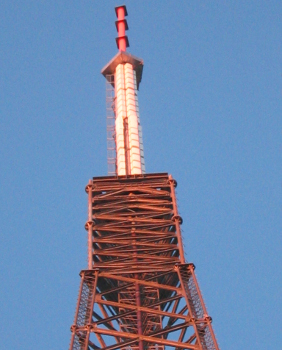Preparing For TV’s Big Repacking Exercise
ARLINGTON, VA.—“It was the spring of hope, it was the winter of despair, we had everything before us, we had nothing before us, we were all going direct to Heaven, we were all going direct the other way….”
As we near the end of 2015, these words penned by Charles Dickens in 1859 seem oddly prescient in light of the impending incentive spectrum auction and repacking. All that’s missing is “nothing was certain but uncertainty itself!”
No matter how much broadcasters wish it would go away, the auction clock is ticking. However, it’s probably not the auction so much as it is the subsequent period for channel “repacking” to clear blocks of spectrum for the wireless broadband “victors” that’s keeping a lot of people awake at night.
In most TV markets, there’s going to be a lot of churn as broadcasters decide to either: (a) take the money and pull the big switch for the last time, or (b) keep operating, but with a high probability of having to change transmitting facilities.
While there can be no absolutes, given the complicated nature of “who stays and who goes” in a particular market, there are some things that the broadcasters should be thinking about right now. These include timelines and deadlines for filing for facility changes; obtaining construction permits; timelines for constructing new facilities; securing funding for facility changes; purchase of a new transmitter, antenna or both; temporary operating facilities; and operational contingency plans. Even if you’re in the former category, you need to think about legally winding down operations.

Joe Davis
WHAT’S GOING TO HAPPEN
To help station operators better prepare for what lies ahead I asked consulting engineer Joseph Davis, president of Chesapeake RF Consultants in Yorktown, Va., to share information about operator responsibilities and the various FCC-mandated post-auction deadlines.
Get the TV Tech Newsletter
The professional video industry's #1 source for news, trends and product and tech information. Sign up below.
Davis lists three categories of stations, excluding those electing to relinquish their spectrum, once the auction dust settles: (1) those staying on their current channel, (2) stations repacked to another channel within the same band and (3) band changers (broadcasters moving from UHF to VHF, or possibly from high-band V to low).
He noted that it’s not only stations that don’t participate in the auction that may be required to relocate to another channel, but also those offering up spectrum initially, but later dropping out of the auction due to insufficient bids or other reasons.
“If you don’t participle in the auction, but you’re a UHF Channel 48 or 49 you can expect to be repacked,” said Davis. “It’s important to know too that if you’re on Channel 20 you can also be repacked to make room for the guy in the next city. The FCC will try to keep stations on their current channel, but that’s not necessarily going to be the case. In some situations, a station might be assigned to a higher channel, but in most situations they will go down.”
INITIAL POST-AUCTION ACTIONS
So, what’s the first step operators must take once the auction ends?
“If stations are relinquishing their spectrum, they have three months to wrap up operations and go off the air,” Davis said. “Stations that have elected to channel-share can stay on the air on this basis, but they have to cease operation on their old channel within six months. This may catch some operators by surprise. They need to have plans for executing channel-sharing arrangements very quickly.”
The FCC has made a provision to extend this deadline by six months in some special cases, but has stated that it will not entertain requests for any further extensions.
“The first deadline occurs three months after the FCC makes post-auction channel reassignments public,” Davis said. “Repacked stations have to file for construction permits and provide an estimate of their construction costs.”

Given the uncertainty of what post-auction operating frequencies may be available in a given television market, it may be time to explore antenna/transmitter options that might remain after the 2009 digital transition. Here a side-mount UHF antenna and top-mount VHF radiator still share a tower.
There will be $1.75 billion in funding set aside to help repacking stations defray construction costs. However, Davis noted that operators electing to move from a U to a V frequency will not be eligible to tap this fund. They must pay any reconstruction costs out of revenue gained from selling their UHF spectrum.
“After this initial three-month period, the 36-month ‘broadcast construction’ period begins, so there’s a total of 39 months,” Davis said. “The FCC stated that they will issue construction permits as fast as they can and that they are also going to establish varying construction deadlines. This means that FCC will review station location, weather conditions, and other factors in making a construction period determination, and some stations will have less than 36 months.
“At the same time, the FCC will be reviewing the cost estimates submitted and set aside up to 80 percent of the estimated costs for commercial stations and up to 90 percent for non-commercial stations. Stations can draw on these funds through electronic bank accounts with the submission of expense invoices to the FCC for review.”
VERY IMPORTANT DEADLINES
“You must cease operation on your old channel within 39 months after the date of the reassignment public notice,” Davis said. “There is no flexibility there at all. The FCC said they would entertain requests for a six-month extension of the construction deadline, but this does not extend the deadline for ceasing operation on the old channel.
“Worst case, a station might have to go dark if the construction takes too long. If you’re dark for 12 months, statutorily your license is cancelled. They’ve said there is a procedure for reinstating it in some cases, but that’s not too reassuring.
“What’s going to happen are ‘interim operations.’ We cannot expect that all stations will construct full and final facilities within 39 months. That’s just not practical. We’re going to see loads and loads of ‘interim operations.’ Maybe a transmitter and antenna for the new channel can be set up temporarily and operated at reduced power. A side-mount antenna might be used until a top-mount model can be installed. There’s also the possibility of setting up a “temporary” channel; it might be possible to ‘camp out’ on spectrum already relinquished by a station using that station’s former facility until more permanent facilities can be built.”
Davis observed that in order to accomplish repack, broadcasters would have to be given some leeway from hard and fast policies and rules.
“The FCC is going to have to give us some flexibility under STAs for interim operations just as they did in the last transition.”
